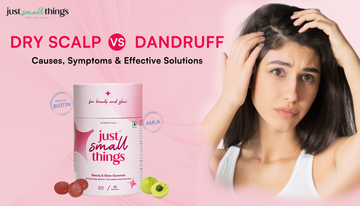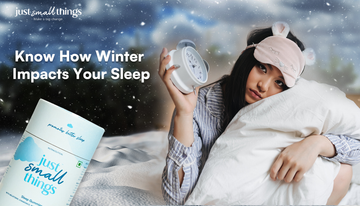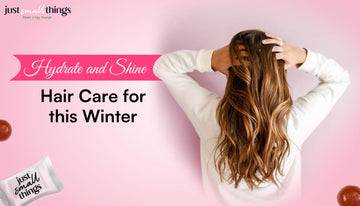Thanks to our lifestyles, we do have a lot of problems with our scalp and hair. You must be thinking dandruff vs dry scalp are the same! But that ain’t the case. Dandruff and dry scalp are entirely two different problems. I agree that they look the same and itch the same way, but how will you treat your scalp if you aren’t sure what the problem is? In order to eradicate the problem, one needs to know what the problem is.
What are the causes of dandruff vs dry scalp?
Dry Scalp Causes:
- Very little to no moisture causes a dry scalp.
- When there is no moisture in the skin, the scalp becomes tight, irritated and starts to flake.
- If your scalp is dry, there are high chances of the skin on your legs and hands being dry too.
- Dry scalp can also be triggered by cold and dry air, especially during harsh winters.
- Dry scalp treatment needs to be natural, as it can be treated easily. Keep your hair and scalp fresh all the time.
- Dry scalp can also be caused by reactions to hair care products such as shampoo, conditioners, hair sprays, and hair gels.
- The use of products that strip the natural oils from the scalp also causes dry scalp.
Dandruff Causes:
- Did you know that skin cells multiply? They do! They die too, and that's how they shed.
- If you are dealing with an inflammation issue, your skin tends to shed faster than usual.
- The main cause of dandruff is seborrheic dermatitis.
- It is a condition that turns the skin on the scalp red, oily, and scaly.
- These scaly cells flake off as white or yellow scales known as dandruff.
- Malassezia, is a fungus that normally lives on the scalp, triggering dandruff.
- If you find the fungus growing excessively, it causes the skin cells to multiply at a massive rate, causing dandruff.
- Dirty hair isn’t a cause of dandruff, but when you avoid washing your hair, excess oil buildup happens, causing flakes.
What are the symptoms of dandruff vs dry scalp?
- The symptoms of dandruff vs dry scalp vary from each other.
- Dandruff is visible as oily and large yellow and white flakes.
- Whereas, a dry scalp has smaller and dry flakes.
- An itchy scalp is visible in dandruff vs dry scalp too.
- Dandruff looks oily, red, and scaly skin.
- Whereas, a dry scalp looks like a small and flaky scalp.
What are the effective solutions of dandruff vs dry scalp?
For Dandruff:
- If you are suffering from dandruff, it is a must that you use medicated shampoos that are specifically for dandruff at least twice a week.
- The best dandruff treatment is using medicated hair care products,biotin supplements and keeping your hair healthy and clean.
- Increase your intake of Omega-3, as it helps to regulate excess oil production in the body, which reduces the fungal growth and flaking of the scalp.
- Use tea-tree essential oil or hair products that have tea-tree oil as key ingredients.
- Tea-tree is anti-microbial and anti-inflammatory which helps with redness and rebalances the scalp.
- High stress levels can trigger dandruff, try meditating or opt for therapy.
- Stay calm and keep your dandruff in check.
For Dry Scalp:
- If you are on a hunt for remedies for dry scalp, then you must ditch the harsh chemicals.
- Sulphates are quite drying chemicals and cause extreme dryness and hair loss.
- How to treat dry scalp? Simply make sure that you get a champi done regularly. An oil treatment can lock moisture into the scalp and also nourish the hair and hair follicles.
- Avoid hair products that have silicone as an ingredient, as they suffocate the skin on the scalp and create a barrier to repel moisture, causing a dry flaky scalp.
- Reading labels is very important to understand what goes into your haircare products and onto your head.
- Always prefer using organic and natural products for a healthy scalp.
- Use scalp scrubs only on a dry scalp to avoid irritation, breakage of hair, and an unhappy scalp.
What are the different types of dandruff?
There are four types of dandruff. While some can be treated easily with a lifestyle change, others need a proper prescription from a well-reputed doctor.
Dry skin dandruff:
- It is the most common type of dandruff and occurs often in the winter months.
- Washing your hair with extremely hot water can also lead to dry skin dandruff.
- To prevent dry skin dandruff, use moisturising shampoos and regularly get a hot oil hair massage (champi).
Oily skin dandruff:
- An oily substance called sebum helps to moisturise and protect the skin, and when these glands produce too much sebum, it makes your hair greasy.
- This excess oil clumps the hair together, irritates the scalp, and causes dandruff.
- These oily flakes tend to be larger than dry scalp dandruff.
- This type of dandruff has a yellowish tint and appears oilier than dry-scalp dandruff.
- A regular shampoo routine with salicylic acid ingredients will help keep these dandruff types in control.
Fungus related dandruff:
- A common kind of fungus called Malassezia lives on the human skin and sometimes triggers an inflammatory response that causes dandruff or eczema in some people.
- Use hair care products that treat and prevent fungus-related dandruff.
- You can also apply diluted tea tree oil or use shampoo with tea tree oil as an ingredient in order to have a healthy scalp.
Skin condition-related dandruff:
- Dandruff can also be a result of different skin conditions, such as psoriasis and eczema.
- Scalp psoriasis produces fine, powdery flakes with a silver sheen to them.
- Whereas, eczema appears like flakes that are larger than those of dry scalp dandruff.





